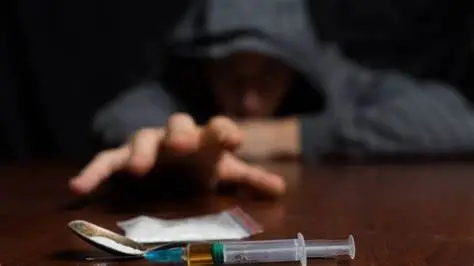
The problem of drug use in Mexico is huge and has become more complex with the contamination of substances that increasingly affect the health of consumers, as is happening in Puerto Vallarta.
“Anything for the party? Coke, tacha, weed,” the drug dealer on the Puerto Vallarta boardwalk offered Anthony. He wasn’t sure he wanted to buy it, but the man followed him for several meters while insisting that it was “good stuff.”
He paid for a few grams of coke with dollars and then went to “the party,” where he had sex with other men and consumed more substances like poppers, alcohol, cigarettes and marijuana. All with a view of the sea.
Several hours after the meeting with other “sweet dealers,” and a day after returning to Arizona, after Vallarta Pride, Anthony sent a message that was disconcerting: “I’m not ok.”
He said that what he felt was different from his hangovers: muscle and head pain, dizziness, nausea, vomiting, confusion, itchy eyes and extreme fatigue. Then he suspected his “new Mexican dealer”, the one on the boardwalk: “I think it wasn’t pure.”
Like Anthony, Marcos was worried that his crystal was contaminated with “fenta”, since the effect he had when ingesting it had been “different.”
According to Energy Control, an organization in Spain that advises and analyzes substances for the management of pleasures and risks, crystal acts on the central nervous system as a massive releaser of neurotransmitters such as dopamine, norepinephrine and serotonin, generating effects such as energy, euphoria, increased sexual desire and decreased inhibitions.
Marcos says that crystal is his “favorite” substance when he has sex with other men, in addition to poppers that produce effects such as euphoria, intensification of lights and sounds, as well as a feeling of dizziness.
Substances are contaminating them
Among the LGBT+ population, there are voices saying that they have to be careful because psychoactive substances “are contaminating them. For what? Who knows.” Perhaps, say some men who have sex with other men, “to make them addicted. For what? Who knows.”
Faced with these warnings, the community has united to protect themselves from the adulteration of “sweets” with fentanyl. They even question, in a joking tone, whether they can sue their dealer.
Recently, the organizers of Pervert, a traveling party referring to the underground of Mexico City and an inclusive space, held Pervert Talks with the purpose of talking about the subject without the stigmas that usually exist towards LGBT+ people who consume addictive substances.
The recently inaugurated Casa La Moira also organized a discussion about substance use among LGBT+ populations. At both events, concern was expressed about the consumption of components that are mixed, without the users’ knowledge, with fentanyl.
According to the Report on the Demand and Supply of Fentanyl in Mexico: Generalities and Current Situation, presented by specialists from the National Commission for Mental Health and Addictions (Conasama), there is an increase in the consumption of this synthetic drug at the local level, but not at the national level.
In 2023, 430 cases of fentanyl consumption were registered in Mexico, while a year earlier, that is, in 2022, 333 people were treated, concentrated in states in the north of the country such as: Baja California, Baja California Sur, Chihuahua, Sinaloa and Sonora.
“This shows that the increase is at the local level, not national; however, the main concern revolves around its high lethality,” the report warns.
“The consumption of fentanyl outside of medical contexts is not only worrying because of its addictive potential, but also because of the high risk of overdose,” it warns.
Source: informador






